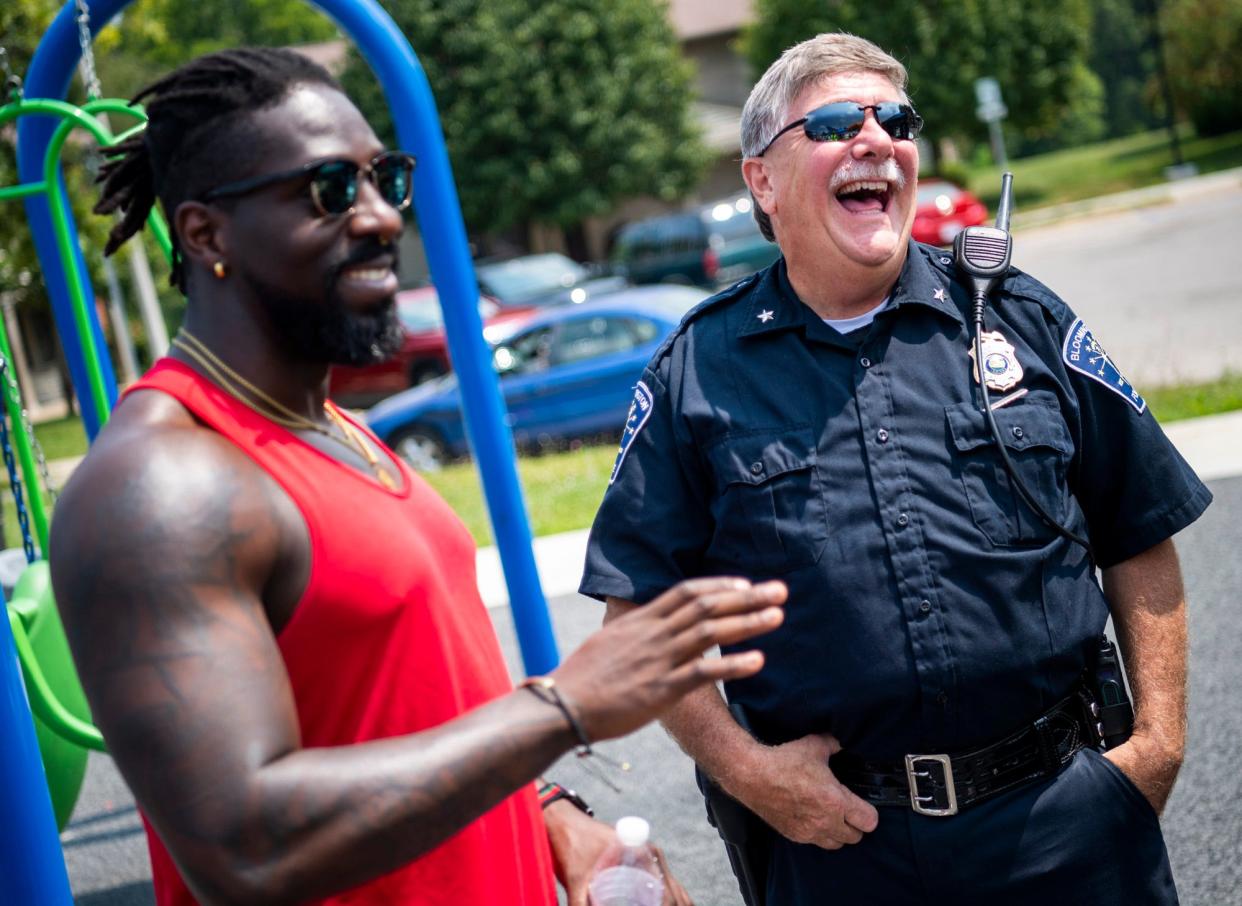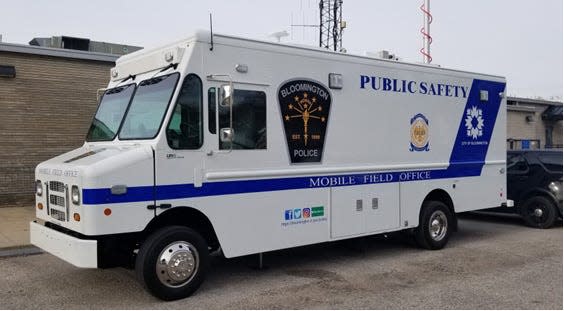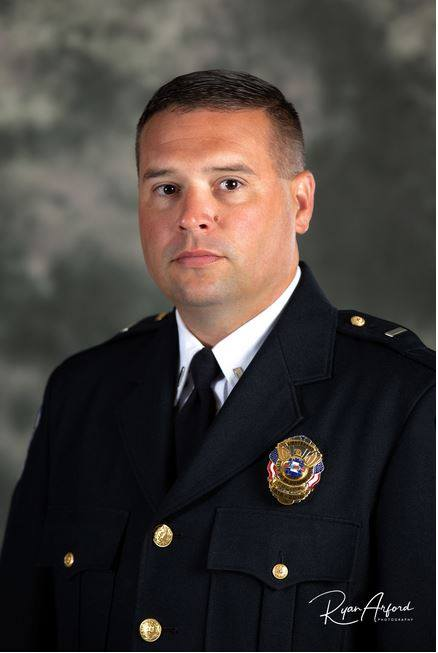Bloomington policing task force has few new ideas — and few people participated

A task force assigned to review Bloomington policing policies recommends the city hire more cops, focus on diversity training, improve citizen perceptions of police, highlight officers' good deeds and listen to people's concerns.
A few of their suggestions, such as diversity training, already were in place. Some, like more community engagement, are being implemented. Others, especially hiring more officers, may be difficult to carry out.
What is the task force and why was it formed?
The Future of Policing Task Force was formed a year ago as part of the city's Racial Equity Plan. It was generated by results of the Divided Community Project, which addressed perceptions about racial equality and police policies.
Since the December 2019 release of the project's assessment, Bloomington has seen an escalation of gun violence not addressed in the report.
Police chief concerned: Bloomington shootings latest example of increased gun violence
The group's initial report has been released, after a year during which four members rode along with police officers to get a more real picture of what they encounter each day on patrol.
Among the challenges listed in the report was the difficulty in getting all 10 members at each meeting and the lack of people present at citizen focus group sessions to discuss concerns.
Also cited as a challenge: that Monroe County government officials, the sheriff's department and the Indiana University Police Department chose not to participate.
"The hope was that participation by these entities would help facilitate consistent communications and law enforcement practices across all jurisdictions," the report said.
A May 2021 news release announcing the task force said members would "actively work to develop a vision for policing that is forward thinking, responsive to community needs, inclusive of diverse community voices and equitable in its implementation of policies and procedures regardless of race, age, gender, gender identity, economic, health, or housing status."
They were instructed to meet right away and to offer reports to the community within 90 days and and again at 180 days.
"The resident-led task force has been named to review and make recommendations about law enforcement in Bloomington and Monroe County ... as part of the city’s commitment to the reduction of racial inequities and continuous improvement of outcomes for all residents," the news release stated.
"Within a year, the task force will present a report to community leaders, the City’s Board of Public Safety, and all law enforcement agencies of its findings and practical recommendations for rectifying inequities described in the report, which will be available for public review and comment."
Why pursue changes?
As part of the Divided Community Project, the city hired mediators from The Ohio State University law school project to analyze ways to address racist tensions that had erupted at Bloomington's Community Farmers Market.
Previously: Bridge Initiative recommends local task force on race issues
The report suggests things that community members and city officials with differing views should pursue. "The goal here is to see the power of people coming together across different groups to act on initiatives where there can be consensus," the Bridge Initiative report said.
Policing task force members have examined an array of issues during the past year. For instance, they heard a presentation on less-lethal weapons such as Tasers. Most Indiana police departments issue Tasers to their officers, but Bloomington does not.
For subscribers: Most police officers in Monroe County carry Tasers. Bloomington's police do not
"The task force feels additional research is needed and will be discussing this further in the future," the report states.
The task force issued nine initial courses of action. Some have been implemented since Mayor John Hamilton learned of them earlier this year.
What does the task force recommend?
1. Increase the salaries of police officers within the next three years.
This has been accomplished. A recent collective bargaining agreement increases officer salaries by 13% starting next year, to be funded by an income tax increase. Other pay-based incentives include a signing bonus of $3,000 to $5,000, $1,000 quarterly bonuses, $750 monthly rental assistance for officers who live in the city and $18,000 in mortgage assistance if an officer buys a house in the city.
More: Bloomington City Council OKs countywide income tax hike. Here's how much it will cost you.
2. Increase social/personal interaction between officers and the public at large.
BPD will be taking its mobile field office truck and patrol vehicles to parking lots around the city to conduct roll calls, when officers gather at the start of each shift for updates from supervisors. Roll calls occur at 5:30 a.m., 1:30 p.m., and 9:30 p.m. "Residents are encouraged to stop and visit with officers as they see the roll calls," BPD Capt. Ryan Pedigo said. Adults and kids can tour the mobile field office and learn about the equipment inside a patrol vehicle.

Officers for years have visited neighborhoods in the summer to pass out popsicles, play games and make efforts to connect with youth who live and play within their patrol areas.
"BPD plans to do neighborhood walks in the coming months to make officers and administrators available to meet with those we serve so we can listen to their concerns and better address them," Pedigo said.
The department also features "BPD Employee Spotlights" on Facebook to introduce officers to the community. The one for May is third-shift Officer Cameron Wells, an Indiana University criminal justice graduate from LaPorte.
3. Annually, convene a series of public meetings to help gauge citizens’ perceptions of the “day to day practices and behavior” of officers.
4. Find new and robust channels and means of publicizing the good that officers do.
The department already does this. For instance, BPD's Facebook page tracks officer community involvement with events such as "Furever Friends Friday," where cops showcase adoptable pets at the animal shelter.
A June 2021 post detailed how a third-shift officer encountered an unhoused family with three children out in the rain and took them to the police station, where the staff pooled their money to buy bus tickets to send the family to a relative's home in another city.
5. Ensure that officers receive training in intercultural/interpersonal communication.
The department has been doing this kind of training for years. In 2021, for instance, all BPD officers completed Integrating Communications, Assessment, and Tactics that uses evidence-based material as a training guide for defusing violent incidents.
6. Assure that BPD has the proper amount of officers on the force. Hire up to par with officers we need.
This will be a challenge, given the current reality. BPD has slots for 105 sworn officers, but currently is 22 short with just 83. Recruitment goes on year round, and a nationwide police officer shortage affects agencies beyond Bloomington.
More: Want to be a cop in Bloomington, Indiana? Here's what it takes.
Hiring and retaining people of color and women is particularly hard. BPD employment data shows that since 2015, the department hired 14 people of color and 11 women. Thirteen minority officers have left, most to join other police departments, and 11 women have moved on as well.
7. Invest in an app to monitor the health of officers which will also allow them to be able to receive needed assistance or to reach out without fear of stigma or have it count against them on their record.
8. Sustain required diversity training annually.
Diversity training is part of BPD's existing policies. "We will continue to mandate that all officers receive anti-bias and de-escalation training each year," Pedigo said in a written response to questions about BPD training.
9. Police social workers – coordinate with Stride Center, Community Care specialists and Centerstone staff.
This coordination happens daily. "Our social workers and Downtown Resource Officers (DROs) work daily with service providers in the community to provide assistance and connect services to those experiencing homelessness as well as those suffering from mental illness and addiction," Pedigo said.

Downtown Resource Officer Amy Romoser this month was named 2022 Outstanding First Responder by Mental Health America of Monroe County. The award recognized her work with community partners in connecting people experiencing homelessness to resources, and her ability to build rapport with those she assists. BPD Social Worker Melissa Stone was nominated by the agency as an "Outstanding Mental Health Provider."
Mayor: City serious about reforms
On May 19, the city issued a news release touting its efforts to help shore up the police force to attract more officers.
“We are grateful to our high-quality and well-trained police officers and dedicated to taking seriously the recommendations of the Future of Policing Task Force, the first of which addresses paying and retaining the people that work at the front lines of public safety in our community,” Hamilton said in the release.
Task force members are:
Carolyn Calloway-Thomas, chair, Indiana University African American and African Diaspora Studies and City of Bloomington Human Rights Commissioner
Kevin Farris, Ellettsville town council member
A'ame Joslin, clinical assistant professor, IUPUC Department of Education and City of Bloomington Commission on the Status of Women member
Treon McClendon, Dr. Martin Luther King Jr. Birthday Celebration Commission
Malik McCloskey, Dr. Martin Luther King Jr. Birthday Celebration Commission
Amy Makice, Bloomington Center for Connection
Pastor David Norris, City Church for All Nations
James Sanders, electronics engineer, Crane Naval Surface Warfare Center and City of Bloomington Commission on the Status of Black Males member
Jim Sims, president, Bloomington City Council
Garfield Warren, research scientist, IU physics department
Contact reporter Laura Lane at llane@heraldt.com, 812-331-4362 or 812-318-5967.
This article originally appeared on The Herald-Times: Police task force wants more cops, better rapport, diversity training

